
Corporate Training Solutions, Employee Skills Development & Professional Growth
4D delivers advanced training solutions and consultation services designed to boost employee skills development and drive measurable results. Our corporate advanced training solutions include leadership training courses, soft skills training, and team building workshops tailored to your business needs.
Corporate Training Solutions
At 4D, we specialize in providing custom in-house and off-site corporate training solutions tailored to meet the unique needs of your organization and improve employee skills development. Our expert trainers design and deliver corporate training solutions that address specific skills gaps and transform employee skills development. We tailor corporate training solutions to suit your exact need and industry. From specialized trainings in Artificial Intelligence and its applications in various industries such as Oil and Gas, and healthcare as well as procurement, logistics, and supply chain to Soft Skills trainings like leadership training courses, communication skills, team building workshops and technical skills enhancement as well as compliance education aimed at employee skills development, our in-house corporate training solutions are designed to boost productivity and drive growth. With a focus on practical, real-world applications and interactive learning, 4D ensures that every advanced training solution session is engaging, effective, and aligned with your business objectives. With expertise in various industries and corporations, we provide learning experiences with real life experiences from our trainers and consultants. Partner with 4D to invest in your employee skills development and achieve measurable success. Tailored trainings to strengthen your team's development and ensure success in your enterprise.
Consultations
At 4D, we offer expert consultation services meticulously tailored to address the unique challenges and opportunities within your organization. Our seasoned consultants specialize in key areas crucial for contemporary business success, including supply chain management, procurement optimization, artificial intelligence (AI) implementation, specialized oil and gas sector strategies, comprehensive logistics solutions, strategic human resources (HR) initiatives, and astute financial planning. We go beyond general advice, working closely with your team to understand your specific context and deliver actionable insights. From optimizing complex supply chain networks and streamlining procurement processes, to integrating cutting-edge AI solutions that drive innovation, our consulting is designed for real-world impact. We also navigate industry-specific complexities within the oil and gas sector, ensure seamless distribution through effective logistics, foster talent and organizational development with HR expertise, and fortify your financial future with strategic planning and risk management. Known for our analytical precision, adaptability, and unwavering commitment to client success, 4D ensures every consultation provides clear communication, efficient execution, and tangible deliverables that drive measurable improvements. Partner with 4D to leverage our specialized knowledge and achieve transformative results in your operations.

Oil and Gas
Tailored corporate training solutions and consultation to boost operational efficiency, employee skills development, ensure safety, and meet the oil and gas industry regulations

Artificial Intelligence Applications
Specialized corporate training solutions and consultation to implement and leverage artificial intelligence and machine learning technologies for innovation and competitive advantage.

Procurement and Purchasing
Customized corporate training solutions and consultation to enhance procurement strategies, streamline purchasing processes, and improve vendor management for greater efficiency and cost savings.
Areas Of Expertise

Manufacturing and Quality Control
Custom corporate training solutions and consultation to optimize processes, ensure quality control, and implement lean manufacturing techniques

Supply Chain and Logistics
Corporate training solutions and consultation to improve employee skills development, supply chain efficiency, inventory management, and overall logistics operations.

Healthcare Services
Advanced training solutions and consultation to enhance employee skills development, patient care, ensure compliance, medical coding and optimize healthcare operations for employee skills development

FMCG
Tailored corporate training solutions and consultation to enhance employee skills development, operational efficiency, supply chain management, and customer engagement in the fast-moving consumer goods sector for effective employee skill development

Project Management
Focused corporate training solutions and consultation to develop effective project management skills, optimize processes, and ensure successful project delivery.

Financial Analysis
Tailored financial expertise with our expert training, analysis, and consultations. We provide solutions to help you make smarter financial decisions and drive growth.

Health, Safety and Environment
Advanced corporate training solutions and consultation to ensure compliance with health, safety, and environmental regulations, and to promote a safe and sustainable work environment to transform employee skills development

Human Resources
Advanced corporate training solutions and consultation to improve talent management, employee engagement, recruitment operations and HR compliance practices.

Retail Management
Corporate training solutions and consultation to enhance employee skills development, customer service, sales strategies, and inventory management in the retail sector to enhance employee skills development.

Energy And Power
Corporate training solutions and consultation focused on enhancing energy efficiency, safety practices, and compliance with industry regulations

Construction and Real Estate
Advanced training solutions and consultation to ensure safety, improve project management, and develop essential technical skills in construction.

Hospitality And Hotel Management
Corporate training solutions and consultation to elevate employee skills development, customer service, operational management, and safety standards in the hospitality industry to transform employee skills development

Contact 4D now and Take your next towards success!
Isn't it time for your company to elevate its capabilities? Your next level of success is within reach with tailored corporate training solutions and consultations from The Fourth Dimension.
Our
Solutions Are Designed
To Be Your Solutions
Strategy
At 4D, our strategy is built on understanding your specific business needs and crafting corporate training solutions that align with your goals. We focus on delivering corporate trainings solutions that support employee skills development and consultancy services that not only address current challenges but also prepare your organization for long-term success. Our approach is data-driven and client-focused, ensuring that every solution we design is strategic, practical, and aimed at creating measurable improvements in your employee skills development.
Execution
Execution at 4D is where vision meets action. We implement our corporate training solutions and consultations with precision, ensuring that every training session, consultancy service, and initiative is delivered seamlessly and effectively. Our team works closely with you to ensure that our approach adapts to your evolving needs, maximizing the impact of our efforts. From start to finish, we ensure results that drive growth, improve efficiency, and empower your team to excel.

Data Driven Results
At 4D, we believe in the power of data to drive real, actionable insights. Our corporate training solutions and consultancy services are designed to deliver measurable outcomes, transform employee skills development using data to track progress, optimize strategies, and ensure maximum impact. By analyzing key performance indicators, we tailor our corporate training solutions to your business's unique needs, ensuring that every decision is backed by solid evidence and geared towards sustainable success.

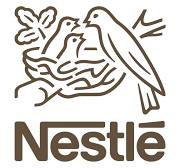
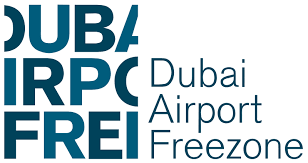


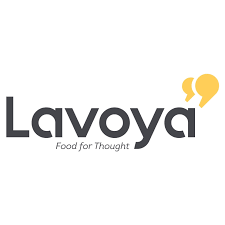
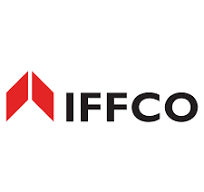
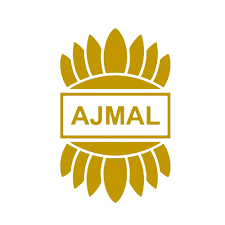
A sample of Our Clients

LOCATION & CONTACT
Meydan Grandstand, 6th floor, Meydan Road, Nad Al Sheba, Dubai, United Arab Emirates
Email: info@fourdtc.com
Tel: +971 4 576 4947
WhatsApp/Mobile: +971 56 919 0444
Trainings By Category
Consultations and Solutions
Quick Links
In Partnership With


© 2025 The Fourth Dimension Training and Consultancy FZ LLC
















.png)

